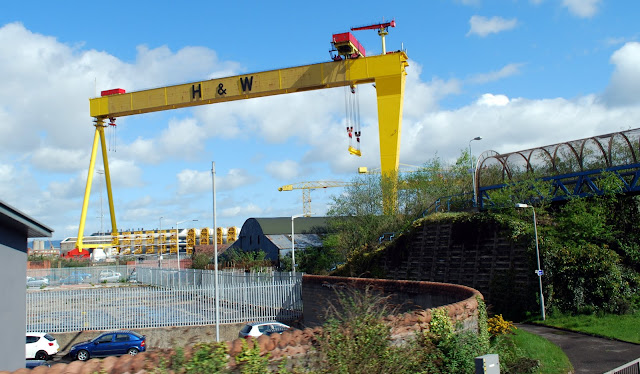At 11.40 PM on Sunday April 14th, 1912 the Titanic, bound from Southampton, England to New York, struck an iceberg just off the coast of Newfoundland and became fully submerged within three hours, before dropping to the bottom of the Atlantic Ocean at 2:20 AM on April 15, 1912. The sinking of the vessel, which belonged to the White Star Line shipping company, caused the death of 1,514 men, women and children, making it one of the deadliest peacetime maritime disasters in history.
Passengers on board the ship included some of the world's wealthiest people, including millionaires such as John Jacob Astor IV, Benjamin Guggenheim and Isidor Straus, and thousands of immigrants seeking a new life in America. There have been many stories over the years recounting why the ship struck the iceberg and why two-thirds of the passengers and crew lost their lives. Was it from faulty construction or the lack of lifeboats? Was it from the absence of binoculars in the crow's nest during night watch or from the shortcomings of the radio operator? The mystery will probably never be sufficiently solved.
When I visited Belfast, Northern Ireland, last year I saw the iconic Harland and Wolff shipbuilding gantry cranes nicknamed "Samson and Goliath" that have become city landmarks. This Belfast shipyard has built many ships; among the more famous are the White Star line trio of the Olympic, Titanic and Britannic.
The city of Belfast was constructing a large six story exploration center called Titanic Belfast at the time of my visit last April, which officially opened on March 31, 2012 to honor the legacy of the 100th anniversary of the launch and fateful first voyage of the RMS Titanic.
Built very close to the site where the Titanic was built, the Titanic Experience enables visitors to:
"Immerse yourself in the amazing story of Belfast in the 1900s, take a spin in the Shipyard Ride, experience life on board and learn about Titanic’s maiden voyage, her tragic sinking, the many stories of human endeavour, and the technology and science that finally found her, and helped to solve some of the many mysteries surrounding that fateful night in 1912."
I toured the beautiful Belfast City Hall during my visit and learned there was one link between Belfast and Harland and Wolff’s most well-known ship that is a bit more obscure. It was the Lord Mayor’s dressing room in Belfast City Hall which you can learn about in this video:
"Dianne Leeman, Tour Service Operator in the City Hall, explains, ‘Viscount William Pirrie was Lord Mayor of the city as well as being director of Harland and Wolff for many years, including those when the Titanic was built. So he utilised his craftsmen down at the shipyards to work on the two big projects, the City Hall and the Titanic."
... the brass memorial plaque that was taken down to the hull of the sunken Titanic and left on the bridge for a few moments and then returned to Belfast for display in memory of those lost with the ship.
There were also interesting placards outside Belfast City Hall that explained the role Belfast had in the planning, construction and launch of the Titanic.
The names of the dead include the ship's designer Thomas Andrews and doctor John Simpson.
Of course the Titanic's final destination was to be New York, before it hit an iceberg in the North Atlantic and sunk, so there is also a Titanic Memorial in New York City.
It is a 60-foot-tall lighthouse built, due in part to the instigation of Margaret Brown (better known as the "Unsinkable Molly Brown), to remember the people who died on the RMS Titanic on April 15, 1912. The lighthouse was originally erected by public subscription in 1913, and stood above the East River on the roof of the old Seamen's Church Institute of New York and New Jersey at the corner of South Street and Coenties Slip.
You can see the lighthouse on top of the Seaman's Institute building in the photo above. From 1913 to 1967 the time ball at the top of the lighthouse would drop down the pole to signal twelve noon to the ships in the harbor. This time ball mechanism was activated by a telegraphic signal, from the Naval Observatory in Washington D.C. In July 1968 the Seamen's Church Institute moved to its present quarters at 15 State Street and this building was demolished. That year, the Titanic Memorial Lighthouse was donated by the Kaiser-Nelson Steel and Salvage Corporation to the South Street Seaport Museum. It was erected at the entrance to the museum complex, on the corner of Fulton and Pearl Streets, in May 1976.
I'd love to tell you a little more about Margaret Brown, of the "Unsinkable Molly Brown" legend, who was aboard the Titanic on its maiden voyage in my next post.
I'm linking with the following blog events:
Thank you to all the blog hosts!













